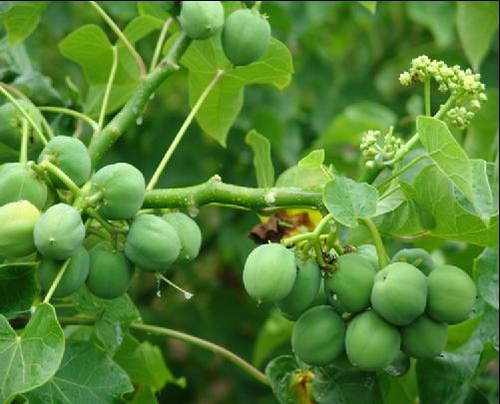版纳植物园利用RT-qPCR技术为小桐子筛选出不同实验样品集内参基
中科院西双版纳热带植物园能源植物分子育种组采用RT-qPCR技术并结合qBasePLUS分析软件,从11个常用的候选内参基因中为小桐子筛选出了适合于不同实验样品集(共20个样品)的内参基因组合。相关文章发表于2013年12月13日的《International Journal of molecular Sciences》杂志上。

版纳植物园利用RT-qPCR技术为小桐子筛选出不同实验样品集内参基因组合
小桐子(Jatropha curcas)是较具发展潜力的生物能源植物之一。近年来,有关小桐子的基因功能研究越来越深入,但迄今为止,还没有针对小桐子基因表达分析筛选出合适的内参基因。随着RT-qPCR实验技术的广泛应用,在分析基因的表达量时选择合适的内参基因作为参考标准显得尤为重要。
中科院西双版纳热带植物园能源植物分子育种组的博士研究生张露在导师徐增富研究员的指导下,采用RT-qPCR技术并结合qBasePLUS分析软件,从11个常用的候选内参基因中为小桐子筛选出了适合于不同实验样品集(共20个样品)的内参基因组合。
研究结果表明,在不同发育阶段(营养生长和生殖生长)的组织样品集中,Actin、GAPDH和EF1α为最佳的内参基因组合;在非生物逆境胁迫(脱水胁迫和冷胁迫)的组织样品集中,Actin、GAPDH和TUB5为最佳的内参基因组合;在单独营养生长阶段的组织样品集中,Actin和TUB8为最佳的内参基因组合;在单独生殖生长阶段的组织样品,GAPDH和EF1α为最佳的内参基因组合;在单独脱水胁迫的样品集中,TUB5和TUB8为最佳的内参基因组合;在单独冷胁迫的样品集中,GAPDH和Actin为最佳的内参基因组合。
此外,有关脱水胁迫样品集中内参基因组合的筛选结果也在本研究中得到标准化验证。不同的实验样品集应选择相应的内参基因组合作为基因表达量分析,本研究结果对小桐子基因功能研究中的基因表达分析具有很大的参考价值。
原文摘要:
Selection of Reliable Reference Genes for Gene Expression Studies in the Biofuel Plant Jatropha curcas Using Real-Time Quantitative PCR
Lu Zhang, Liang-Liang He, Qian-Tang Fu and Zeng-Fu Xu
Jatropha curcas is a promising renewable feedstock for biodiesel and bio-jet fuel production. To study gene expression in Jatropha in different tissues throughout development and under stress conditions, we examined a total of 11 typical candidate reference genes using real-time quantitative polymerase chain reaction (RT-qPCR) analysis, which is widely used for validating transcript levels in gene expression studies. The expression stability of these candidate reference genes was assessed across a total of 20 samples, including various tissues at vegetative and reproductive stages and under desiccation and cold stress treatments. The results obtained using software qBasePLUS showed that the top-ranked reference genes differed across the sample subsets. The combination ofactin, GAPDH, and EF1α would be appropriate as a reference panel for normalizing gene expression data across samples at different developmental stages; the combination of actin, GAPDH, and TUB5 should be used as a reference panel for normalizing gene expression data across samples under various abiotic stress treatments. With regard to different developmental stages, we recommend the use of actin and TUB8 for normalization at the vegetative stage and GAPDH andEF1α for normalization at the reproductive stage. For abiotic stress treatments, we recommend the use of TUB5 and TUB8 for normalization under desiccation stress and GAPDH and actin for normalization under cold stress. These results are valuable for future research on gene expression during development or under abiotic stress in Jatropha. To our knowledge, this is the first report on the stability of reference genes in Jatropha.

